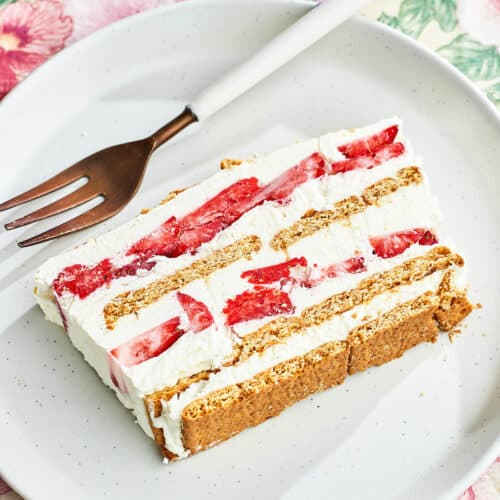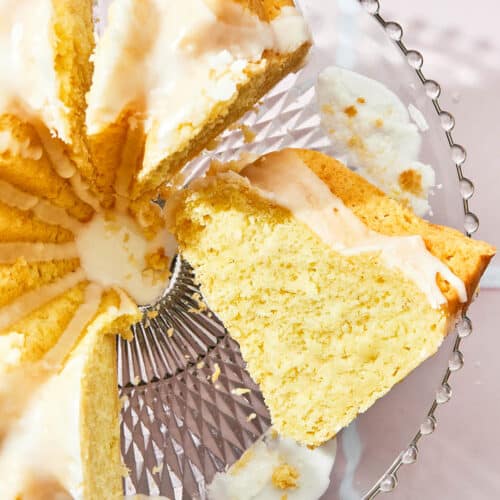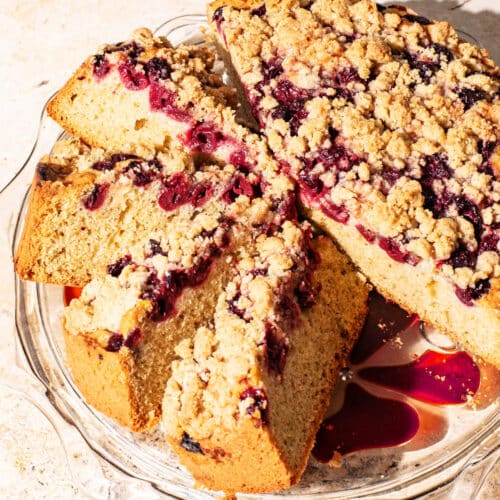With just seven ingredients, a simple Victoria sponge cake is a classic for a reason. Layer with Chantilly cream and jam for a beautiful dessert. Sponge cakes were invented during the renaissance period and were the first cakes to be made without yeast, using only eggs as a leavening agent. The Victoria sponge is named after Queen Victoria and uses baking powder, which was only invented in 1843.
Adding baking powder makes for a more reliable cake batter, ensuring a greater rise with less effort. This classic cake is light, fluffy, and just sweet enough. We follow the classic 1:1:1 method, with equal parts butter, sugar, and flour. Just one bowl is needed for making the cake batter, and standard cake tins are used (no spring-form needed).
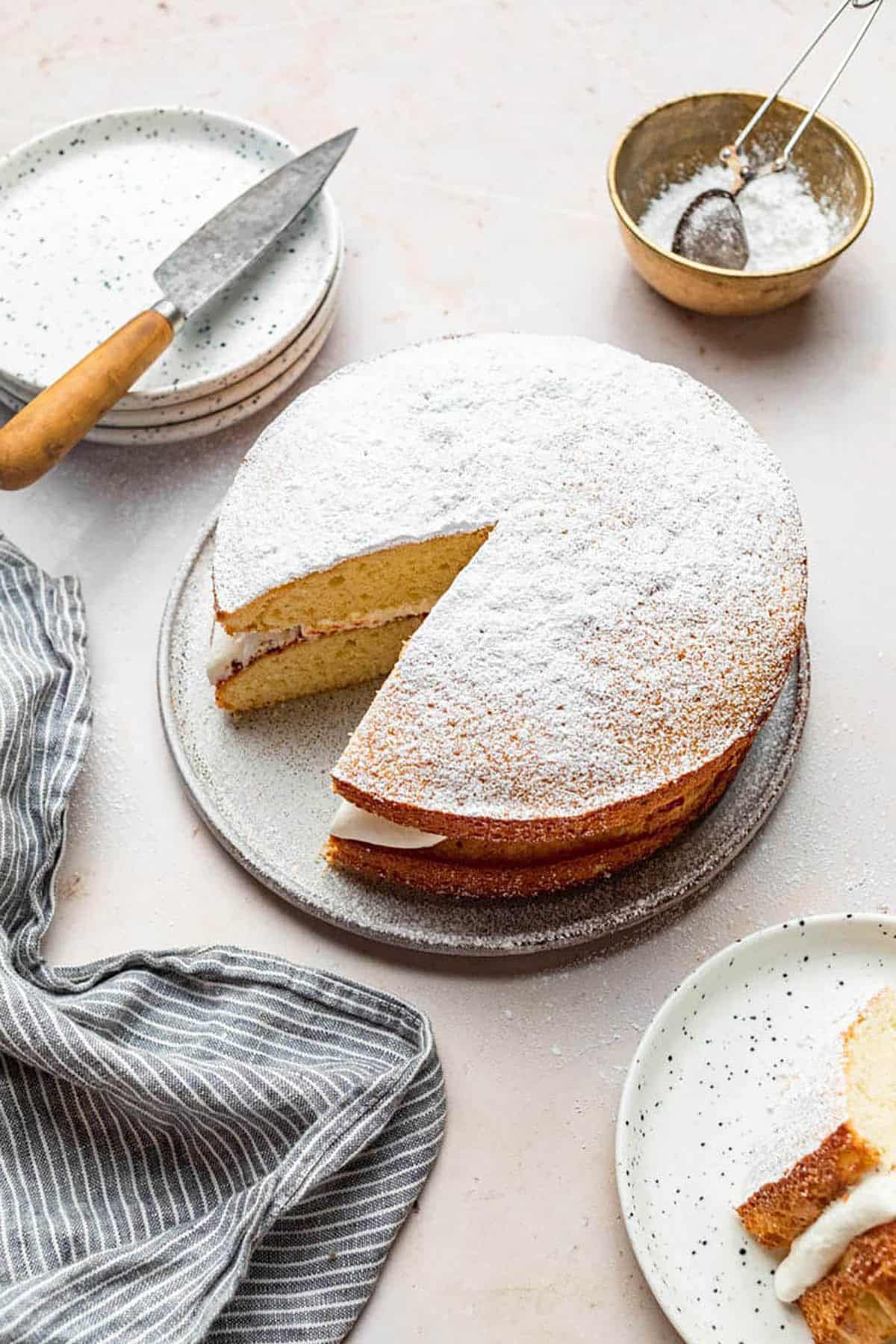
Jump to:
Ingredients

Ingredient Notes and Substitutions
- Strawberry jam: any type of jam you like can be used. Strawberry jam is classic, but raspberry, rhubarb, and even peach would all be excellent.
- Cake flour: all-purpose white flour can replace cake flour in a pinch, but if you are switching them, make sure to weigh your ingredients. Cake flour weighs less. The cake will be a bit denser if using plain flour.
- Add-ins: if you want to jazz things up a bit, try adding the zest of an orange or lemon to the cake batter. Mix it in after creaming the sugar and butter.
- Make it dairy-free: use a good vegan butter and non-dairy milk.
Method
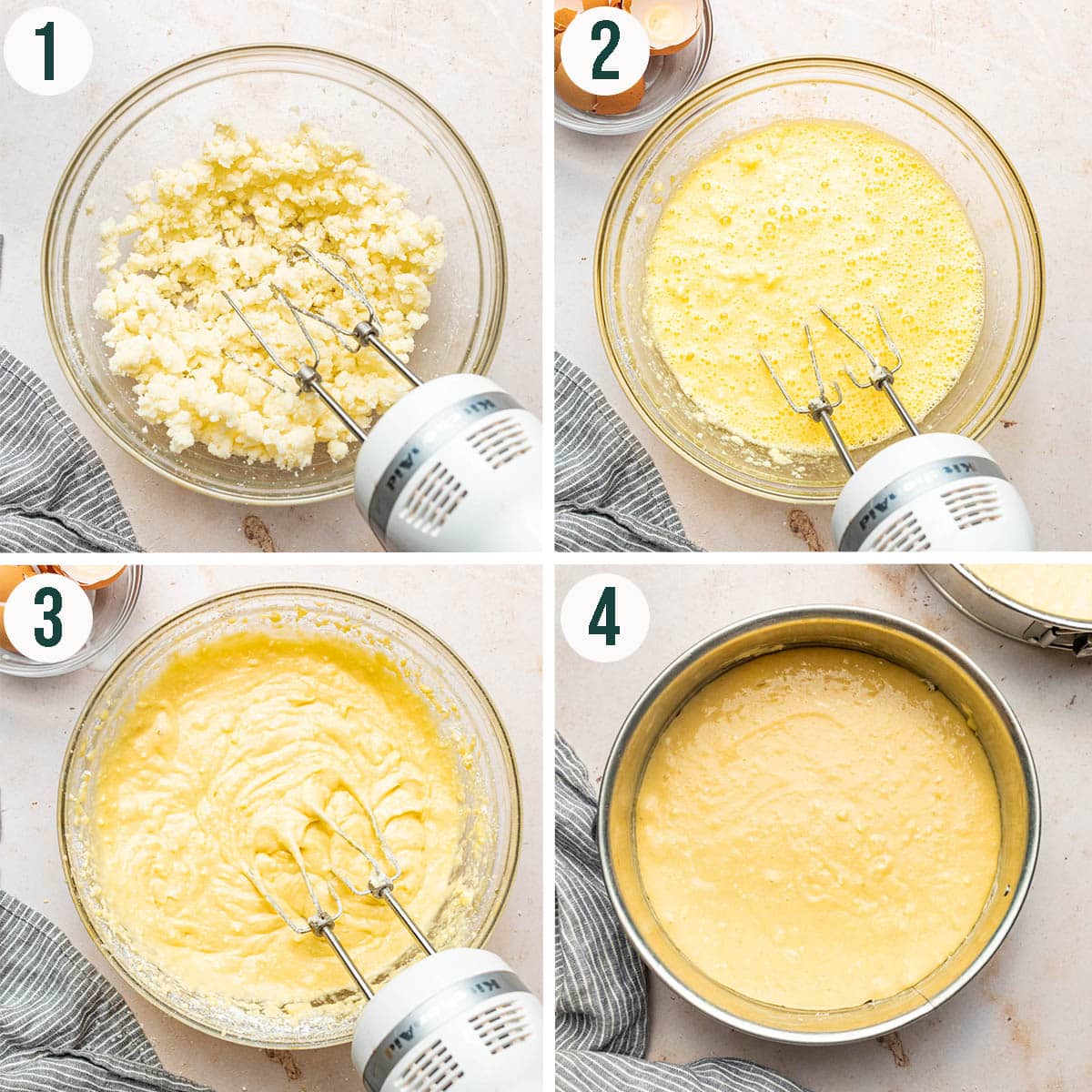
Step 1: cream the butter and sugar with an electric mixer.
Step 2: add the eggs and beat again.
Step 3: carefully mix in the dry ingredients. Don't over-mix.
Step 4: transfer to two prepared cake tins.
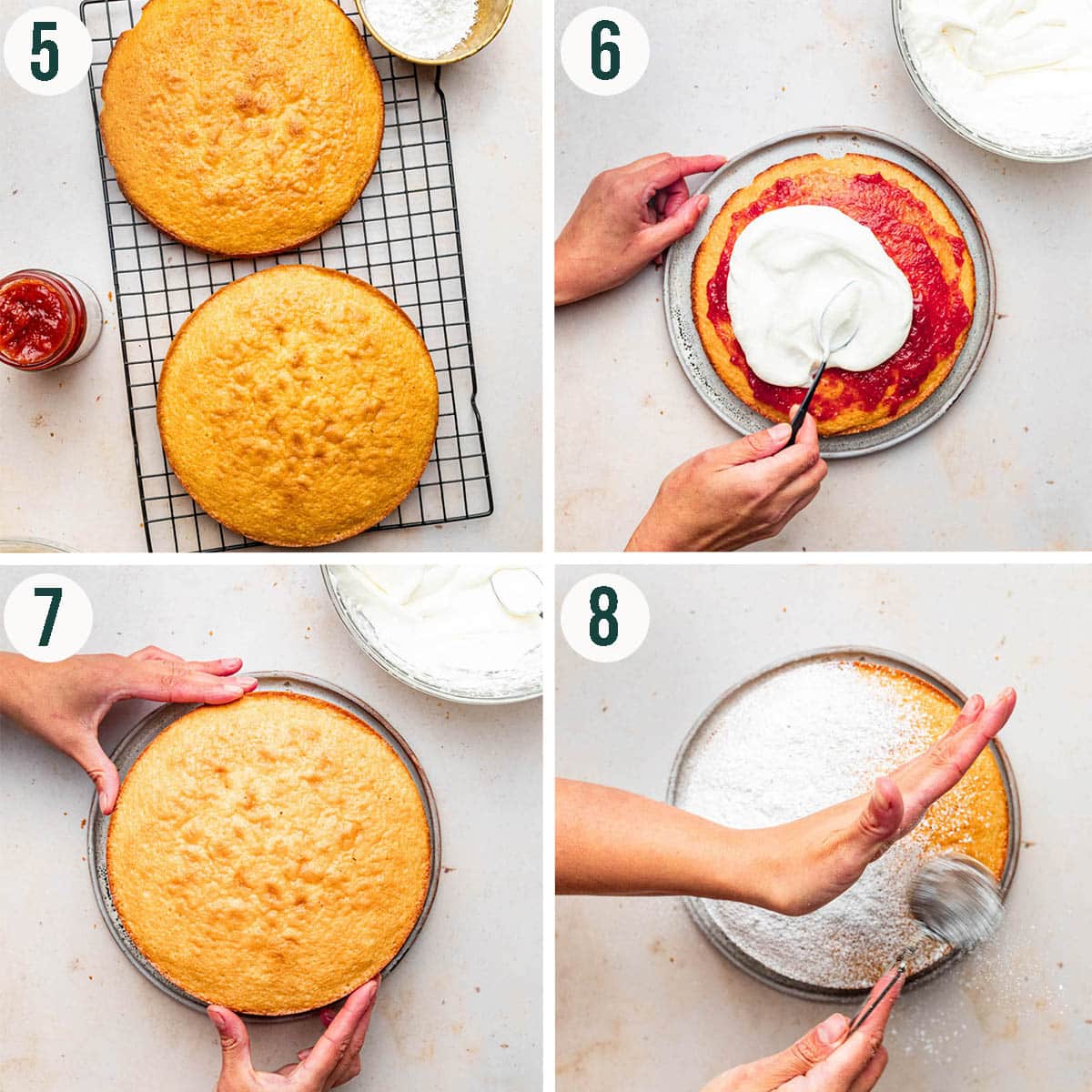
Step 5: bake until lightly golden, then cool fully on a wire rack.
Step 6: add the cream and jam and spread evenly over one of the cakes.
Step 7: top with the second cake.
Step 8: sprinkle with sugar and serve.
Top Tips
- Use room temperature ingredients: any cold ingredients can cause the batter to curdle and the cake won't be as soft.
- Cool fully: make sure both cakes are completely cooled before adding the filling. Any warmth will cause the cream to melt and ooze out (think Bake Off).
- Don't over-mix: if the batter is mixed too long once the flour is added, the cakes will be tough.
Recipe Notes
A stand mixer can be use for making the batter, but be careful not to over-mix. Use the whisk attachment.
Any round cake tin can be used to bake the cakes, including spring form pans. We like the easy release, but use whatever you have.
Make sure all of the ingredients are at room temperature before starting for the best results.
Don't mix up baking powder and baking soda! Baking powder has added starch and cream of tartar (check the ingredients if you're not sure). We aren't using self-raising flour.
Chantilly cream is just whipped cream with sugar and vanilla added (extract, powder, or paste). We like this little boost of flavour, but plain whipped cream is nice too.
We developed this recipe grams-first as it’s a 1:1:1 recipe. That’s why some of the imperial measurements are a bit funny.
How to Store
Storage: a filled sponge is best served fresh, as fillings can soak into the cake and ruin the crumb. To store, wrap the cake layers well and keep at room temperature for up to 2 days. Fill immediately before serving. Leftovers can be refrigerated for a day or two, but it will soften.
Freezing: freeze the cake layers without filling. Wrap very well and freeze for up to 3 months. Thaw in the refrigerator, then bring to room temperature before filling and serving.
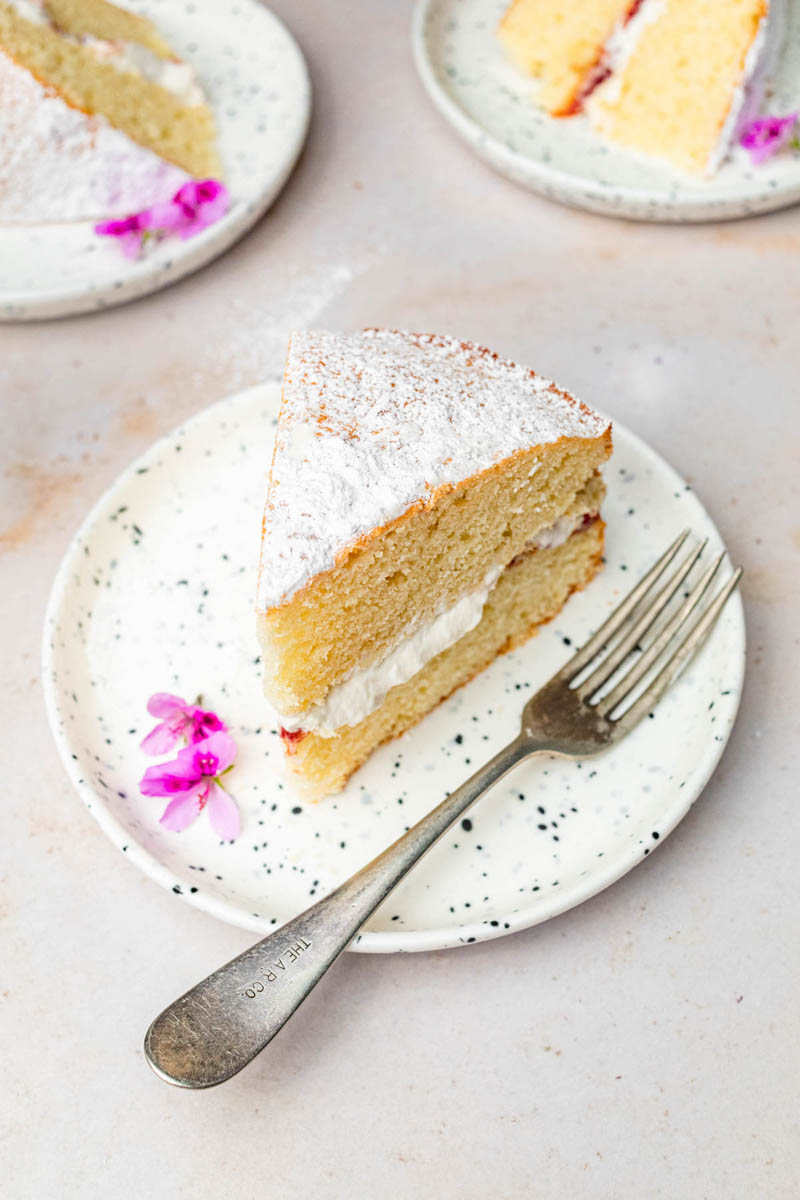
FAQ
What does 1:1:1 mean for baking?
This means you use equal parts butter, sugar, and flour. You can see in the recipe that the gram amounts are all equal, and this is a common method for sponge cakes.
What is the secret to a good Victoria Sponge?
They key to a good sponge is beating very well, and then not over-mixing. The butter and sugar should be very well mixed, and then more air is incorporated with each egg that's added. Then don't over-mix when the dry ingredients are added, and you'll have a perfectly fluffy sponge cake.
Why is my Victoria sponge dry?
If your cake is dry, it's probably over-baked. If you followed the recipe down to the letter, and the cake is still dry, then your oven is likely running too hot. Use an oven thermometer for the best results.
More Beautiful Cakes
If you make this Victoria Sponge Cake or any other cake recipes on the Baked Collective, please take a moment to rate the recipe and leave a comment below. It’s such a help to others who want to try the recipe. For more baking, follow along on Instagram, TikTok, and YouTube.
Victoria Sponge
Equipment
- 2 8-inch (20cm) round cake tins
- pastry brush
- Parchment paper
- Mixing bowl
- Hand or stand mixer
- Rubber spatula or wooden spoon
- Measuring cups and spoons or a digital kitchen scale
- Wire rack
Ingredients
- 1 cup salted butter softened
- 1 cup + 2 tablespoons sugar
- 4 large eggs room temperature
- 1 ¾ cups cake flour
- 2 ½ teaspoons baking powder
- ⅛ teaspoon salt
- 2 tablespoons milk
To Serve
- 2 tablespoons icing sugar
- 1 cup Chantilly cream
- ¼ cup strawberry jam
Instructions
- Grease two 8-inch (20cm) round cake tins with butter. Line with parchment paper and set aside. Preheat the oven to 375°F (190°C).
- Add the butter and sugar to a large mixing bowl (or the bowl of your standing mixer). Use electric beaters to mix until very light and fluffy, 3-4 minutes.
- Add the eggs one at a time, beating between each addition, until all four have been incorporated into the cake batter.
- Add half the flour (¾ cup or 112 grams), the baking powder, and salt to the bowl. Mix until just combined. Add the milk and remaining flour and mix again, being careful not to over-mix.
- Divide the batter between the two prepared cake tins, gently tapping to level.
- Bake the cakes on the middle rack of the preheated oven for 20-25 minutes, or until the top of the cake springs back when lightly touched.
- Cool the cakes for 10 minutes before removing from the tins and cooling fully on a wire rack.
- To assemble, spread jam over the top of one of the cakes, followed by Chantilly or whipped cream. Top with the second cake, then dust with icing sugar.


